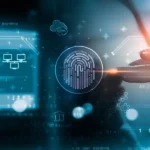
Cybersecurity is a pressing concern in our digitized world, and understanding the security features embedded in Country Code Top-Level Domains (ccTLDs) is crucial. In this comprehensive exploration, we delve into the nuances of ccTLDs, shedding light on their security aspects, and unraveling the intricacies that make them unique.
Unraveling Country Code Top-Level Domains (ccTLDs)
Country Code Top-Level Domains, commonly known as ccTLDs, are two-letter domain extensions associated with specific countries or territories. These domains play a pivotal role in shaping the online identity of a nation. Understanding the security measures within ccTLDs requires a deep dive into their architecture and governance.
The Significance of Country Code Top-Level Domains in Cybersecurity
Securing National Cyber Frontiers
Country code top-level domains serve as the digital borders of nations, encapsulating their online presence. The security features embedded in these domains directly impact a nation’s cybersecurity posture, influencing how data is managed, accessed, and protected within its digital boundaries.
Evaluating Security Measures in Country Code Top-Level Domains
Domain Authentication Protocols
Ensuring the legitimacy of a ccTLD involves robust domain authentication protocols. These protocols, including DNS Security Extensions (DNSSEC) and Domain-based Message Authentication, Reporting, and Conformance (DMARC), fortify the integrity of the domain, thwarting potential cyber threats.
Registry-Level Security Practices
At the registry level, where ccTLDs are managed, stringent security practices come into play. Multi-factor authentication, encryption protocols, and regular security audits are integral components that safeguard the core infrastructure of these domains.
Legal Frameworks and Cyber Legislation
Beyond technical measures, the legal frameworks governing ccTLDs contribute significantly to their security. Countries with well-defined cyber legislation create an environment where malicious activities are penalized, fostering a secure digital space.
Common Security Challenges and Mitigations in ccTLDs
DNS Spoofing and Pharming
One prevalent challenge is the risk of DNS spoofing and pharming, where attackers manipulate DNS records. Implementing DNSSEC mitigates these risks by ensuring the authenticity of DNS responses.
Cyber Sovereignty vs. Global Connectivity
The balance between national cyber sovereignty and global connectivity is a delicate one. Striking the right equilibrium requires collaboration between nations, fostering a secure global internet ecosystem.
Emerging Threats and Technological Advancements
As technology evolves, so do cyber threats. Continuous monitoring, threat intelligence sharing, and prompt adoption of security technologies are vital to stay ahead of emerging threats.
Navigating the Landscape of Country Code Top-Level Domains
Understanding ccTLD Governance Models
Each ccTLD operates under a unique governance model. Some are government-managed, while others involve private entities. Understanding these models provides insights into the level of security integration and accountability within each ccTLD.
Compliance with International Standards
Countries aligning their ccTLD management with international standards contribute to a more secure global internet infrastructure. Compliance with standards such as ISO 27001 showcases a commitment to robust cybersecurity practices.
Final Words
In the intricate realm of Country Code Top-Level Domains, cybersecurity stands as a linchpin for a resilient digital landscape. By comprehending the security features woven into ccTLDs, nations can fortify their online frontiers, ensuring a secure and interconnected cyberspace.
Commonly Asked Questions
Q1. How does DNSSEC enhance ccTLD security?
DNSSEC adds an additional layer of security by digitally signing DNS data, preventing unauthorized alterations and ensuring the authenticity of domain information.
Q2. What role do legal frameworks play in ccTLD security?
Legal frameworks establish guidelines and consequences, shaping the security landscape of ccTLDs by deterring malicious activities through legal means.
Q3. How can nations balance cyber sovereignty and global connectivity with their ccTLDs?
Striking a balance involves collaboration, where nations work together to maintain a secure global internet while respecting individual cyber sovereignty.
Q4. Why is compliance with international standards crucial for ccTLDs?
Compliance ensures adherence to recognized cybersecurity standards, fostering a secure and standardized environment for ccTLD management.
Q5. What measures can individuals take to enhance the security of their ccTLDs?
Implementing strong authentication, regularly updating security protocols, and staying informed about emerging threats are essential steps for individual users to enhance ccTLD security.
Advertisement







